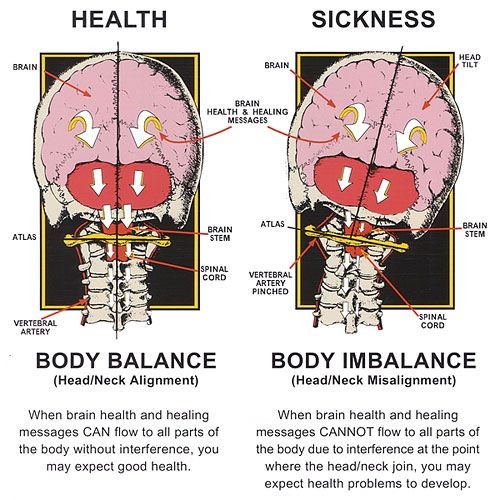A Misalignment Of The Head And Neck

Your head, which weighs about 10 pounds, balances delicately on a vertebrae known as the atlas (the first bone in your neck), which in turn sits on a vertebrae called the axis (the second bone in your neck). These vertebrae surround your brain stem, through which messages from your brain flow down the spinal cord and out through your nervous system to the rest of your body.
If your atlas and axis shift off of the center of your spine, your head and neck will become misaligned, which can cause interference to the normal flow of your nervous system. This interference or irritation is called upper cervical subluxation.
Subluxation Causes a Variety of Problems
The human body is normally a self-healing organism, with the brain being the master controller of every system and cell in the body. With proper nervous system function, the body can and will operate at full potential, ultimately expressing optimal health due to proper brain/body communication.
However, if your head and neck are misaligned, causing the nervous system interference known as upper cervical subluxation, you can experience problems from two different underlying issues:
- Nervous System Interference – Because of the subluxation, your brain cannot properly communicate with your body on how to effectively fight off disease and dysfunction, and problems ensue.
- Body Structure Shifts – Your body will react to the head/neck misalignment by attempting to compensate. Your posture will shift, and other parts of your body, such as your pelvis or shoulders, will become misaligned as well. When these shifts occur many symptoms can develop, including headaches, muscle stiffness, muscle pain and sciatica.
Because of all this, upper cervical subluxations can manifest as numerous different symptoms, including pain, discomfort and disease.
